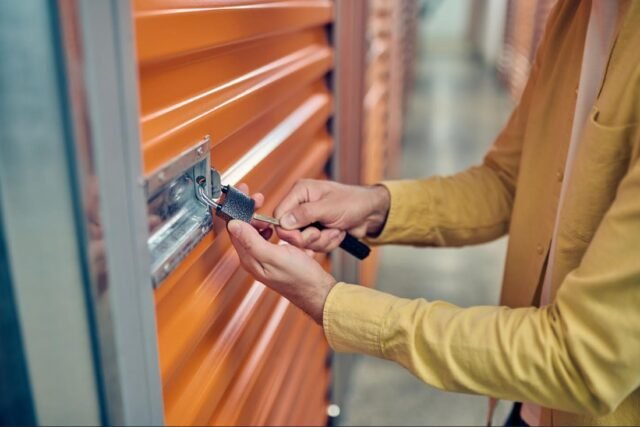Imagine walking up to a locked storage unit, knowing that everything inside could be yours for the right price. You can’t see what’s hidden in the back. You can’t open boxes or peek under blankets. All you have is a quick glance and your best guess. This is the thrilling gamble that draws thousands of Americans to storage auctions every week.
When Storage Units Go Up for Sale
Every month a payment is missed, the storage facility fires off another dreary letter. After three or four of those, the unit is tagged “sell” and the paperwork begins. The owner might still have a day to rescue the ironing board or family photos; if not, the facility turns pennies on the dollar. A handful of quick signatures, a small fee for the auctioneer, and the lot is on the trailer before the sun sets. The facility counts the income while telling the absent renter goodbye.
The Bidding Game
Every Saturday morning, the bribery of sunshine, donuts, and anticipation pulls strangers into lots behind chain-link fences. A small podium, a bigger coffee, and The Rules. No entering the unit, no sharing the space. Bid on what you see and only what you see. Through the megaphone, the auctioneer’s voice describes bids that climb higher and higher, exceeding the entry price, bids for old dinnerware that could be restored, the unsettling doll’s head, and the odd, sealed gray box that may have been misplaced on the way out to the parking lot. The door eventually clangs shut on that box. Someone will go home and open it.
Smart bidders watch for little hints. Polished wood furniture often whispers “money,” while neatly stacked boxes hint at a curated collection. Treadmills and kettlebells usually suggest someone invested heavily, in workout gear, at least. Yet first impressions can easily mislead.
The auctioneer opens low, and the numbers shoot up as bidders jockey for the most promising locks. Regulars greet the same faces week after week, silently trading signals that one of them just spotted a win. The air crackles when two determined bidders lock eyes on the same door.
What People Actually Find
What you usually find is… boring. Mismatched forks, faded sweatpants, and the same cheap bookshelf on every row. Yet every so often, the everyday turns legendary.
Past sales tell the story: a gold coin hoard, a sunburst Stratocaster, jeweled bracelets, and paintings that pay for the whole haul. One guy pried open a unit and found a soggy sheet hiding a gleaming Harley. Someone else blinked at a half-forgotten box of mint-condition baseball cards.
Most pros boost their odds with a storage auction platform like Lockerfox that alerts them to sales at every nearby facility. That way, they string together routes and never waste a dry trip.
Conclusion
Think you’re ready? The thrill is real, and the profits can be sweet, but the road is long. The smart ones come in with spreadsheets. They study what sells, respect the neighborhood market, and never ignore the budget.
If you’re tempted to dip a toe in, spend a couple of Saturdays just watching from the back row. Notice how the pros move, how they size up a car in a few seconds, what they jot on their clipboards and what they leave unanswered. Let the gavel fall a few times without you raising a hand; treat each car like a sealed envelope. Some reveal a jackpot of low miles and clean titles; others uncork a flood of repairs the glove box never hinted at. You’ll leave with a clearer gut and a smaller bill the first time you finally do raise your hand.











